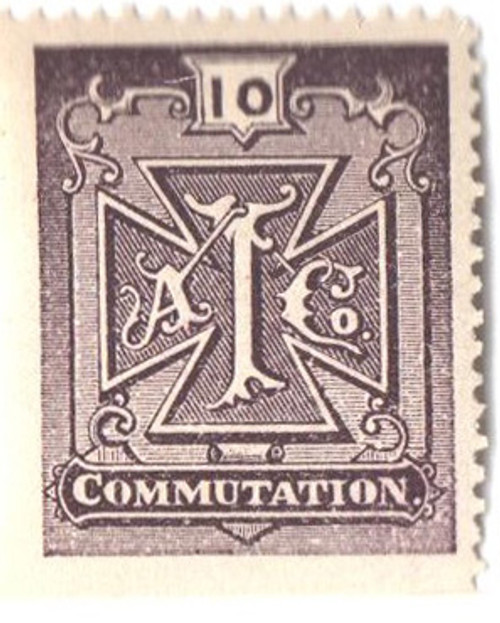
# 3T3 - 1885 10c red brn,perf 12,"Balt.& O
Telegraph Stamps Make a Great Addition to Your Revenue Collection
Telegraph stamps were created solely for the pre-payment of telegraph fees. A customer would complete a telegraph form, and give it to the clerk along with payment. The clerk would then apply and cancel the stamp to show that the fee had been paid.
On May 24, 1844, Samuel Morse sent the first message over telegraph. While in the Supreme Court chamber of the US Capitol, he sent the message “What hath God wrought!†over the telegraph to his assistant in Baltimore, Maryland. Born in 1791, Samuel F.B. Morse initially embarked on a career as a painter. In 1825, he was painting Marquis de Lafayette when he received a letter by horse messenger from his father telling him that his wife was very ill. The next day, he received another letter saying that she had died. By the time he returned home, she’d already been buried. Morse was distraught over the loss and upset that he hadn’t received the news of her poor health sooner. He then resolved to find a faster means of long-distance communication. In 1832, Morse met an expert in electromagnetism. After witnessing his experiments with electromagnets, Morse developed the idea of the single-wire telegraph. Though other inventors in Europe were also working on their own telegraphs, Morse continued to work on his own. In January 1837, US Naval Captain Samuel C. Reid petitioned Congress to establish a national telegraph system. A month later, Congress asked Secretary of the Treasury Levi Woodbury to investigate the possibility of creating such a system. Woodbury issued a request for suggestions and received more than a dozen responses. Nearly all these responses were for optical telegraphs. The only one that wasn’t, came from Morse, who suggested an “entirely new mode of telegraphic communication†– an electromagnetic telegraph. In his enthusiastic letter to Woodbury, Morse said this his telegraph could work day or night in any weather, better than any other form of telegraph. He also said it would be able to record messages; messages could be received even if there wasn’t a person present to receive it. Morse also pointed out that because telegraphs were “another mode of accomplishing the principal object for which the mail is established, to wit: the rapid and regular transmission of intelligence, [it seemed] most natural to connect a telegraphic system with the Post Office Department.†Morse received his patent in 1837, and sent his first telegram on January 11, 1838, across two miles of wire. Morse and his assistant Alfred Vail created Morse Code, a “dot and dash†system used to send information through the telegraph’s clicking sounds. Together they continued to refine the system over the next few years. In 1843, Congress granted $30,000 to test “the capacity and usefulness†of Morse’s telegraph. Morse then went about constructing the telegraph line between the US Capitol in Washington, DC, and the train depot in Baltimore, Maryland. On May 24, 1844, he transmitted his first message – “What hath God wrought,†a quote from the Book of Numbers in the Bible. The announcement of Morse’s success fascinated the nation. One reporter stated that it “commences a new era in the process of correspondence… Information will be literally winged with the rapidity of lightning.â€Â Morse and his assistant then spent several months sending messages across the telegraph day and night, showing how it could be used in a number of ways. The telegraph line was officially opened to the public on April 1, 1845. Morse was made superintendent of the system and an employee of the Post Office Department. The new service had a postage rate of one-quarter of one cent for each character of the message, paid by the sender. Once the messages were received at the other end, they were written down and given to postmen for delivery. The telegraph service was unprofitable in its first year, so Congress didn’t want to pay to establish more lines. However, Morse and others recognized the importance and usefulness of the telegraph, so they formed their own company and built their own lines from their own funds. By late 1846, telegraph lines connected Washington and New York City, while other lines stretched to Boston and Pittsburgh. Eventually, the private company took over operation of the Washington-Baltimore line, authorized to do so if they didn’t charge the government for their service. From then until World War I, telegraph service would remain in private hands. Telegraph service remained in use through the end of the century, but would come to an end in 2013. Find lots more Telegraph stamps here – they’re up to 140 years old and affordable!The First Telegraphic Message
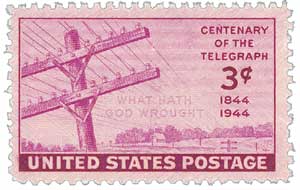
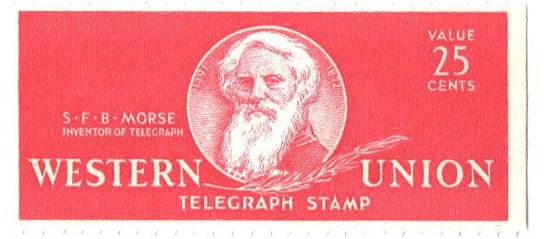
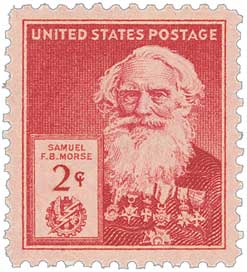

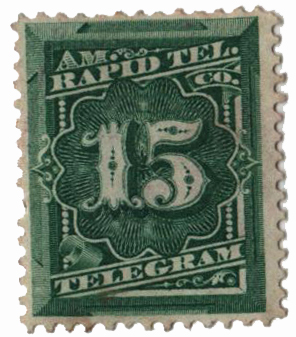
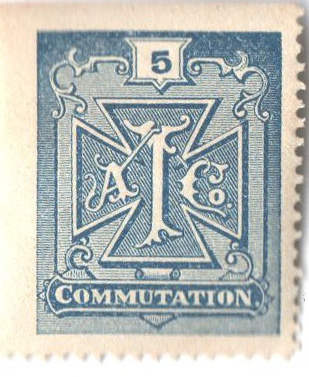
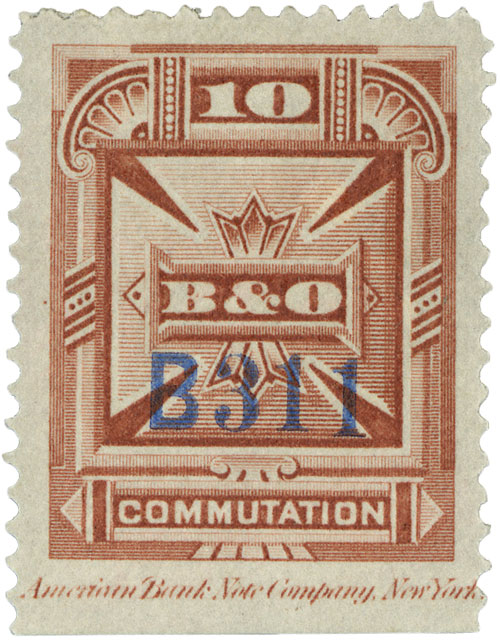
Telegraph Stamps Make a Great Addition to Your Revenue Collection
Telegraph stamps were created solely for the pre-payment of telegraph fees. A customer would complete a telegraph form, and give it to the clerk along with payment. The clerk would then apply and cancel the stamp to show that the fee had been paid.
On May 24, 1844, Samuel Morse sent the first message over telegraph. While in the Supreme Court chamber of the US Capitol, he sent the message “What hath God wrought!†over the telegraph to his assistant in Baltimore, Maryland. Born in 1791, Samuel F.B. Morse initially embarked on a career as a painter. In 1825, he was painting Marquis de Lafayette when he received a letter by horse messenger from his father telling him that his wife was very ill. The next day, he received another letter saying that she had died. By the time he returned home, she’d already been buried. Morse was distraught over the loss and upset that he hadn’t received the news of her poor health sooner. He then resolved to find a faster means of long-distance communication. In 1832, Morse met an expert in electromagnetism. After witnessing his experiments with electromagnets, Morse developed the idea of the single-wire telegraph. Though other inventors in Europe were also working on their own telegraphs, Morse continued to work on his own. In January 1837, US Naval Captain Samuel C. Reid petitioned Congress to establish a national telegraph system. A month later, Congress asked Secretary of the Treasury Levi Woodbury to investigate the possibility of creating such a system. Woodbury issued a request for suggestions and received more than a dozen responses. Nearly all these responses were for optical telegraphs. The only one that wasn’t, came from Morse, who suggested an “entirely new mode of telegraphic communication†– an electromagnetic telegraph. In his enthusiastic letter to Woodbury, Morse said this his telegraph could work day or night in any weather, better than any other form of telegraph. He also said it would be able to record messages; messages could be received even if there wasn’t a person present to receive it. Morse also pointed out that because telegraphs were “another mode of accomplishing the principal object for which the mail is established, to wit: the rapid and regular transmission of intelligence, [it seemed] most natural to connect a telegraphic system with the Post Office Department.†Morse received his patent in 1837, and sent his first telegram on January 11, 1838, across two miles of wire. Morse and his assistant Alfred Vail created Morse Code, a “dot and dash†system used to send information through the telegraph’s clicking sounds. Together they continued to refine the system over the next few years. In 1843, Congress granted $30,000 to test “the capacity and usefulness†of Morse’s telegraph. Morse then went about constructing the telegraph line between the US Capitol in Washington, DC, and the train depot in Baltimore, Maryland. On May 24, 1844, he transmitted his first message – “What hath God wrought,†a quote from the Book of Numbers in the Bible. The announcement of Morse’s success fascinated the nation. One reporter stated that it “commences a new era in the process of correspondence… Information will be literally winged with the rapidity of lightning.â€Â Morse and his assistant then spent several months sending messages across the telegraph day and night, showing how it could be used in a number of ways. The telegraph line was officially opened to the public on April 1, 1845. Morse was made superintendent of the system and an employee of the Post Office Department. The new service had a postage rate of one-quarter of one cent for each character of the message, paid by the sender. Once the messages were received at the other end, they were written down and given to postmen for delivery. The telegraph service was unprofitable in its first year, so Congress didn’t want to pay to establish more lines. However, Morse and others recognized the importance and usefulness of the telegraph, so they formed their own company and built their own lines from their own funds. By late 1846, telegraph lines connected Washington and New York City, while other lines stretched to Boston and Pittsburgh. Eventually, the private company took over operation of the Washington-Baltimore line, authorized to do so if they didn’t charge the government for their service. From then until World War I, telegraph service would remain in private hands. Telegraph service remained in use through the end of the century, but would come to an end in 2013. Find lots more Telegraph stamps here – they’re up to 140 years old and affordable!The First Telegraphic Message



















